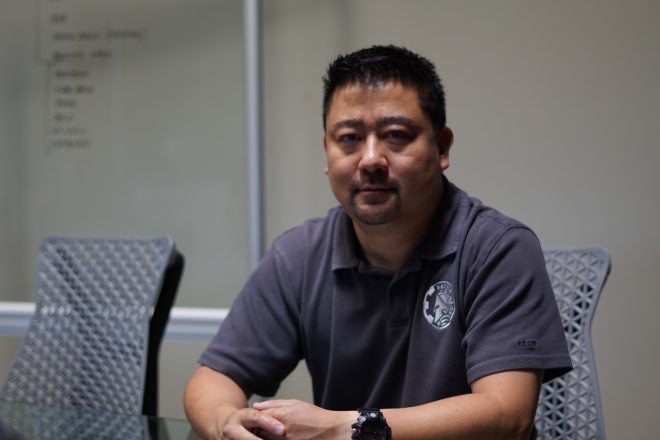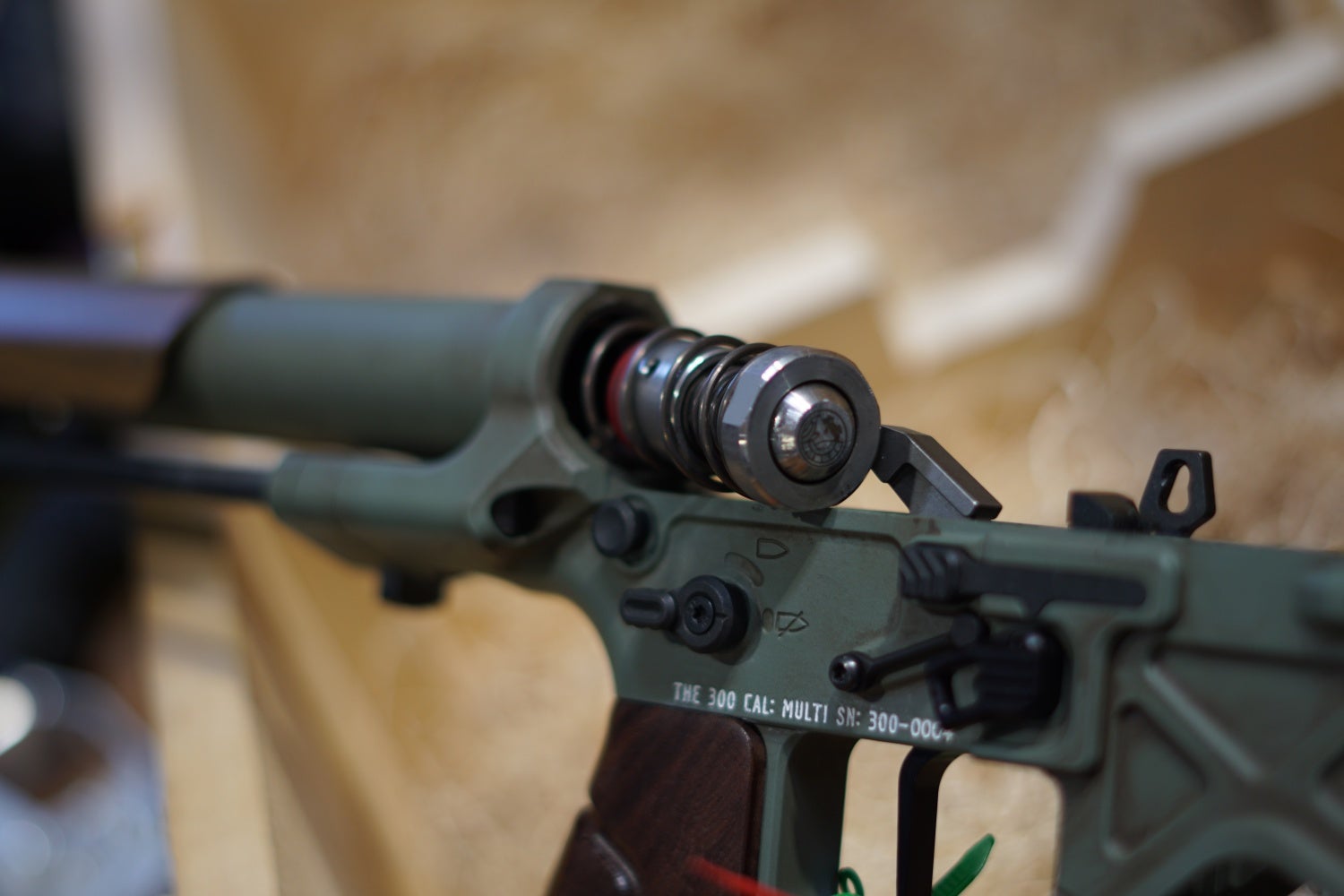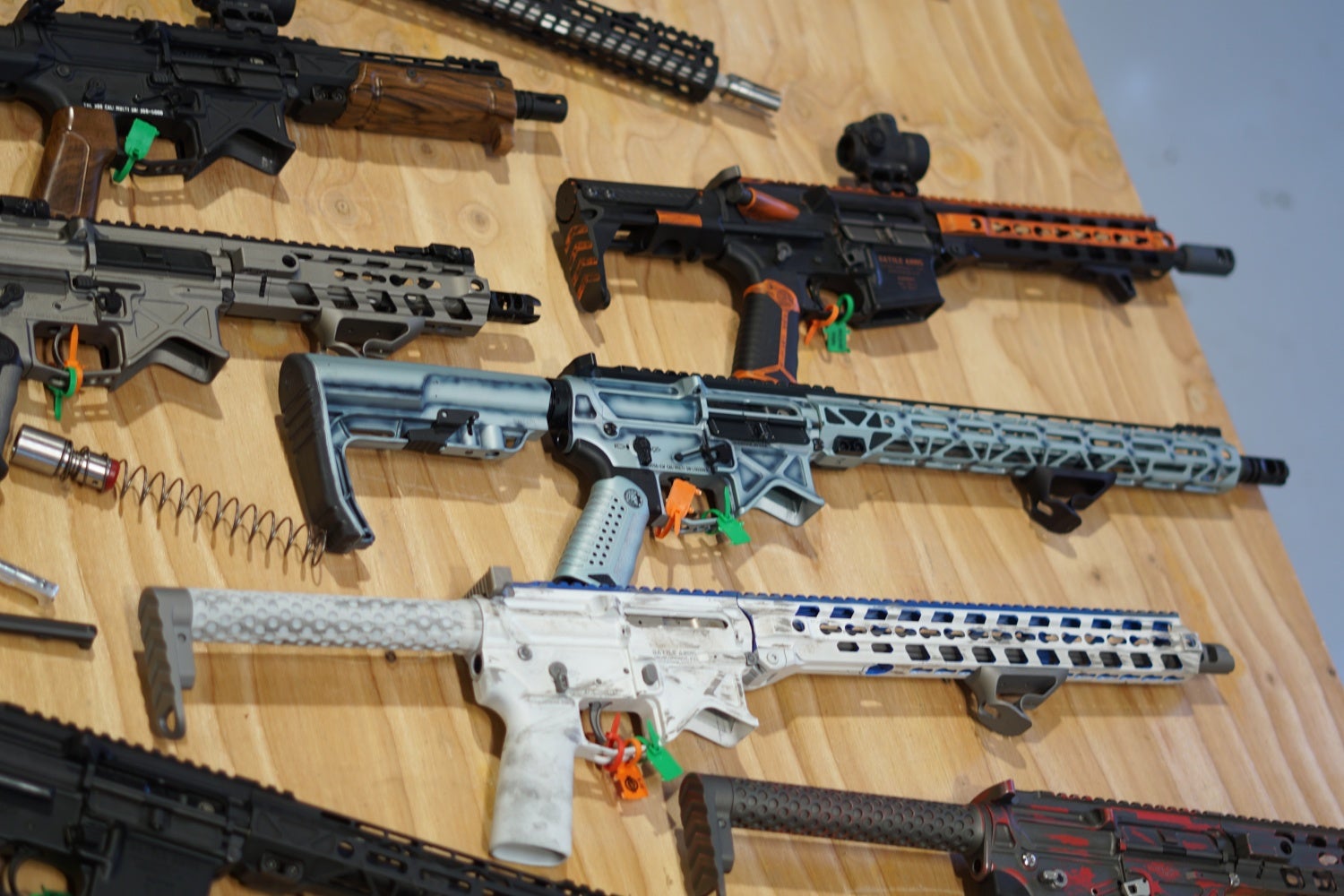Recently we received an opportunity to sit down with one of the founders and current leader of Battle Arms Development, George Huang at the companies new location in Las Vegas. We discussed everything from the beginnings of the organization to how George applies his architectural engineering background to designing eye-catching and reliable AR15s.
The Firearm Blog: So George, could you fill us in on some of your pre-Battle Arms Development background and expertise?
George Huang: Well, I graduated from Penn State as an architectural engineer specializing in lighting and electrical aspects of the trade. From there my career path kind of veered off into a unique direction. My career began working on and designing theme parks and attractions, things like Jurassic Park, Lego Land, Disney, etc… In this area the degree is more of a baseline, there isn’t anything that allows you to jump right into that sort of work. This lasted for around 10 years in California. That led to me coming to Nevada and working in the casino industry, which is very similar to the theme park industry in many ways. Building a mega-casino is like building a city, just like a city that exists in a theme park. Going from theme parks to casinos and now to rifles, my skill set changed as I jumped from one career to another. But the commonality between all three is that of being a problem solver. Trying to have a broad range of skills has also been very important. Starting off as an architectural engineer, then acquiring knowledge of mechanics, even some marketing. An important point here when talking about theme parks and casinos is the ability to create a world that you can be totally immersed in.
TFB: And the Battle Arms jump?
GH: Right, so I’ll go back to problem-solving. Once you develop that mindset of solving problems, then the question is what problem needs to be solved. I mean, in theme parks one day I would be trying to make a realistic spaceship that visitors could step into, then the next day it would be dinosaurs, working with animatronic dinosaurs, maybe later Main Street USA or Toon Town. It doesn’t matter what that “Subject Line” is, what the theme is, or any particular effect. The question is how do you utilize the resources you have to accomplish a goal and tell a story. Disney and casinos are all about telling a story. Something that many people don’t realize is that these places are telling stories even at a subconscious level. You walk into a casino, you are presented with a certain smell, different from the Wynn than if you were going to the Bellagio for example. Memory as well, all the things that you see from the architecture to the lighting, you’re being influenced and you don’t even know it. You go to a theme park and you’re in a whole other world, the same thing. You are being put on a stage but you don’t even think about it most of the time.
TFB: So what was the AR stage?
GH: The AR stage was post 9/11. The September 11th attacks sparked off my interest in firearms. I was not a firearms guy before at all. I’d been shooting before, with my dad but I never owned a firearm. So I thought, “It’s about time I exercise my Second Amendment rights”. Like everything else I do, I wanted to learn as much as possible so I went overboard with my education. I can’t do anything halfway. That initial jump forms some of the ethos here at Battle Arms, in that we consider ourselves “Experts of the Unknown”. Clients will come to us with a proposal or product idea and say “Have you done this before?”, and we’ll say “No”, “Can you do this now?” and we’ll say “Yes!”. And we’ll work really hard to take that jump and make it happen. So far I think we’ve been successful in this endeavor. We don’t want to be afraid of the unknown is what I’m getting at. Initially with firearms, I started out as a complete novice, going on all the forums, trying to read as much as possible, I even became a senior moderator at some of them in a very short period of time. Instead of AR15s, I really got into M14s at first. That led to numerous classes in handgun, carbine, rifle, shotgun disciplines. As an engineer I was constantly looking at firearms from the point of view of problem solving, how do we make these things better. As an example with the Springfield Armory M1A, I got tired of having to bring all these different toolkits with me. Flash hider alignment tool, castle nut pliers, gas wrench, and all this other stuff.
TFB: First Battle Arms product?
GH: In 2009 it was the BAD-T1, a multitool that was specifically tailored for the working on the M1A. It had everything I needed and it was portable enough to fit in the buttstock compartment. There was supposed to be T2, but I never made it, instead skipping to a T3 and T4 version. I haven’t made it in a while because it was such an expensive product to make. That was a mistake because it really was to serve as a hobby and not as a business. People who got them, got a killer tool because I didn’t build in all my margins to actually make a profit. I figured I’d make a couple for myself and several more that would cover the cost by selling it to friends. When. I got into the AR side, things took off so fast because of the volume and demand was so much greater than M1A.
TFB: How difficult was it to get into this financially?
GH: When we started, with no investors, it is extremely so. You spend tens of thousands of dollars without even blinking an eye. You file a patent? That’s twenty-five thousand dollars, you want a prototype done, get ready to have five to ten thousand dollars to prototype. You want to do a production run? How many thousands of pieces do you want? Okay, I’m going to need six figures to make that one tool… You have to make very tough decisions when it comes to this business.
TFB: How did you go from the BAD T1 to ARs?
GH: The ambidextrous safety selector was our first AR product, coming after the BAD T1. Again, the thing was problem-solving. With ARs, my former business partner came to me with the opinion that no one was really making a good ambidextrous safety. One side was always scraping your knuckles when you were shooting. I went to work designing something and we came up with the BAD-ASS or Ambidextrous Safety Selector. Every product we have always has some acronym to it, in front of the company acronym. We also had the BAD C-ASS, which stood for Comeback. That was a project we worked on with Remington Defense for the M4 Carbine Upgrade Program that kind of went nowhere. But we did develop a very strong safety selector that had the strength of a single piece but obviously was a two piece due to being ambidextrous.
TFB: When did Battle Arms become a full-time occupation?
GH: It was all part-time for about 4-5 years, 2009 to 2015 or so. November 2013 I retired from the casino industry. We only had variations of several products for the initial years until I could get into it full time. It was a tough decision, working the full-time casino job, then working at UNLV as an associate professor teaching, and also doing Battle Arms as well. I was a walking zombie and I had to give something up occupation-wise. After I was able to commit all of my time to the company, we were able to grow exponentially. Since then we’ve received over 30 U.S. Patents issued, and another 30 pending.
TFB: Battle Arms has only recently gotten into offering a production rifle, you’ve mostly been known for parts?
GH: Yes, our views are that we have to learn to walk before we run. So we started with the safety selector, then the takedown pins, magazine release, pistol grip, one thing after another. Now we have the ability to put together rifle where the majority of the parts are designs of our own. People ask “What more can do you with a takedown pin?”. Well, a lot, we have two patents on our takedown pins. Our philosophy has always been that we are going to innovate out of a problem, out of a down market. Last year was a terrible, terrible year for example but I think we pulled out of it.
TFB: What do you think of the firearms industry, coming in as an outsider?
GH: This industry is incredibly slow when it comes to innovation. Why has the AR15 been around for 60 years but is basically the same thing as when it was first introduced in the 1950s? There has been some recent innovation but not nearly as much as other industries. Take your phone for example. How often do phone companies come out with a new model? You buy a new iPhone and it’s obsolete 6 months to a year later, whether it is bigger, or better, faster somehow. A year is a lifetime for electronics but apparently, 60 years is still young in firearms. You get 1911s, over a hundred years old, still one of the most common handguns on the U.S. market! I mean, Glock is 1980s technology, pushing almost four decades at this point and is still very similar to the initial design. For me, a year is a lifetime away. My goal is to bring as much innovation to the industry as possible. With that, competition is key because either way the consumer is most likely going to win. Take Samsung and Apple, trying to beat each other out. If Apple had no competition, we’d still be stuck with the same model iPhone for several years. You may build a better AR part than me, but I’m going to try my best to come back and make something better than that.
Stay tuned for Part Two and the TFB TV episode coming up! Much thanks to the Battle Arms Development team for allowing TFB to spend time with them at their facility and on the range.
 Your Privacy Choices
Your Privacy Choices




